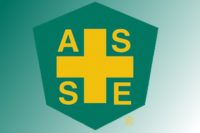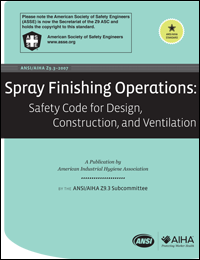Z359.0 – Definitions and Nomenclature Used for Fall Protection and Fall ArrestThis part functions as a dictionary of specialized terms compiled from the other four sections and defines each of approximately 150 terms used throughout the new standard.
Z359.1 – Safety Requirements for Personal Fall Arrest Systems, Subsystems and Components
This part contains product design criteria and test procedures for fall arrest components, subsystems and systems, just as in the previous version of the standard. However, it has been revised with several important new requirements, including:
1. Gate strength requirements have increased for snap hooks and carabiners to 3,600 pounds in all directions of potential loading to the gate.
2. A front attachment element for fall arrest is now included in the standard — The revised standard allows attachment of the fall arrest system to a front-mounted D-ring. Front D-ring connection is limited, however, to systems restricting free-fall distance to two feet or less and limiting front D-ring maximum fall arrest loads to 900 pounds force, or less.
3. Additional testing and warnings for twin-leg shock-absorbing lanyards — The new standard includes a 5,000-pound static test of the joint between the two lanyard legs. Also added is a product label warning to attach only the center snap hook to the harness back D-ring.
Z359.2 – Minimum Requirements for a Comprehensive Fall Protection Program
This entirely new section is directed at employers and safety professionals rather than product manufacturers. It sets detailed requirements for a comprehensive fall protection program and forms the basis for the standard’s other four sections. The standard’s purpose is to:
1. identify, evaluate and eliminate (or control) fall hazards through planning;
2. ensure proper training of personnel;
3. ensure proper installation and use of fall protection and rescue equipment;
4. implement safe fall protection and rescue procedures.
The program standard establishes strength criteria for various fall protection anchors. Anchors are divided into two categories, Certified and Non-Certified. Certified anchors are those that have been selected under the supervision of a Qualified Person. Non-Certified anchors are judged by a Competent Person as capable of supporting the predetermined anchor forces prescribed by the standard. Requirements by application are outlined in Table 1 (below).
Other requirements in the new standard include: basic principles for rope access; provisions for prompt rescue after a worker has fallen and remains suspended; requirements for incident investigation; regular evaluation of the effectiveness of the Managed Fall Protection Program.
Z359.3 – Safety Requirements for Work Positioning and Travel Restraint Systems
Z359.3 is another all-new section and establishes minimum design and test requirements for equipment used in work positioning and travel restraint. Work positioning systems are designed to prevent a fall from occurring. When a fall hazard is present, positioning systems must be used in conjunction with a separate and independent personal fall arrest system.
Restraint systems do not support a portion of the worker’s weight and are used only on walking/working surfaces with a slope between zero and 18.4 degrees. Full-body harnesses must meet the requirements of ANSI Z359.1 for fall arrest. In addition, work positioning and travel restraint attachment elements (D-rings) must withstand a dynamic strength test consisting of a 3.3-foot free fall with a 220-pound test weight. Lanyards under this section must be designed and tested to withstand a static load of 5,000 pounds force without breaking.
Z359.4 – Safety Requirements for Assisted Rescue and Self-Rescue Systems, Subsystem and Components
This new standard establishes requirements for design, performance, marking, qualification, instruction, training, use, maintenance and removal from service of products used in rescue and evacuation. The standard is directed at rescue systems utilized in preplanned rescue applications for one to two persons wherever a fall hazard exists.
Harnesses, rescue lanyards, and anchorage connectors must meet the applicable requirements in ANSI Z359.1. Evacuation harnesses are for rescue only and not for fall arrest.
Self-retracting lanyards with integral rescue capability must engage in the rescue mode at any time, have a minimum 3:1 mechanical advantage, hold a load in rescue mode and have a means to stabilize the device during use. Synthetic rope tackle blocks must use rope with a minimum breaking strength of 4,500 pounds tensile load and 3,100 pounds static load. They must have a secondary brake to prevent uncontrolled descent, and have a minimum mechanical advantage of 3:1. Descent devices can be single- or multiple-use devices, and can be automatically or manually controlled. Manually controlled devices must stop if descent control is released and must also have a panic-grab function (stop descent if excessive force is applied to the control).
Personnel hoists may be operated manually or by an external power source. Units operated by an external power source must have a manual back-up operation mechanism. Hoists must also be able to stop and hold a load and include a back-up brake mechanism.
To obtain copies of the new standards, contact the American Society of Safety Engineers, online atwww.ASSE.org.
SIDEBAR
Fall arrest- Non-Certified anchor: 5,000 lbf static strength
- Certified anchor: designed, selected and installed by a Qualified Person; static strength two times maximum arresting force
- Non-Certified anchor: 3,000 lbf static strength
- Certified anchor: static strength two times foreseeable force
- Non-Certified anchor: 1,000 lbf static strength
- Certified anchor: static strength two times foreseeable force
- Non-Certified anchor: 3,000 lbf static strength
- Certified anchor: static strength five times the applied load


